Carpenter Ants
Carpenter ants are the largest type of ants you will see around a house, ranging from 3.4mm to 15mm in length. Adult Carpenter ants have 3 distinct sections of their body and hairs at the tip of their abdomen.
It is not uncommon for people to mistake swarmer carpenter ants for termites. The key to identifying them is to look for the thin waist. One of the two sets of wings will be shorter than the other.The antennae have an elbow shape.
Carpenter ants can be found in wooded areas all over the world. These ants build their nests inside of wood. The nests consist of chewed passage galleries. Unlike termites, the ants do not actually consume the wood that they remove from the galleries. They prefer moist dead wood.
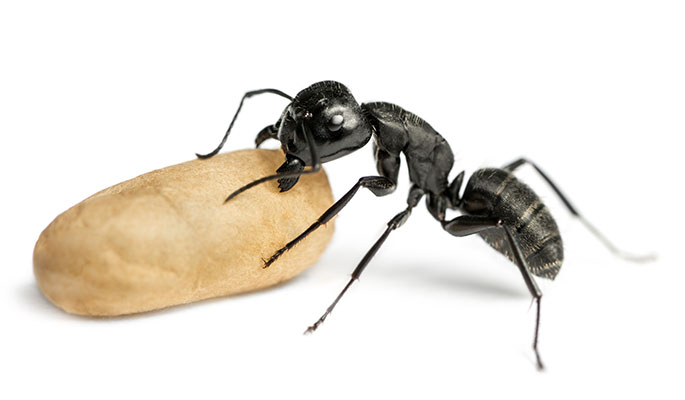
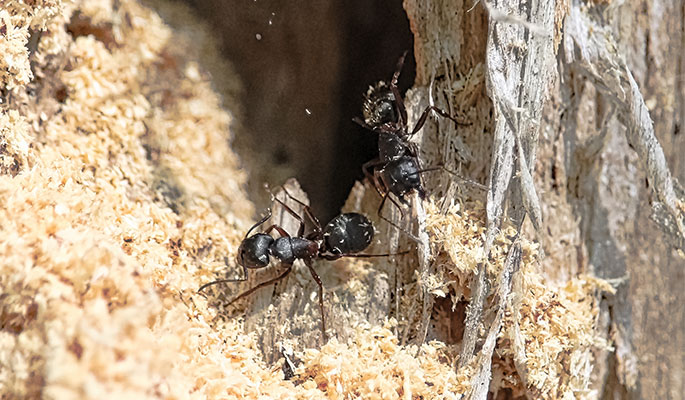
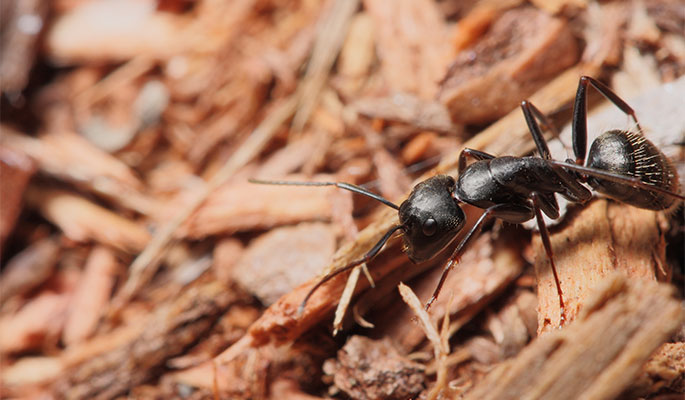
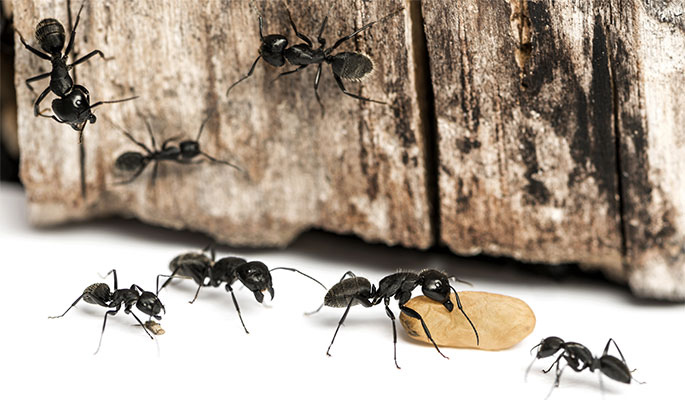
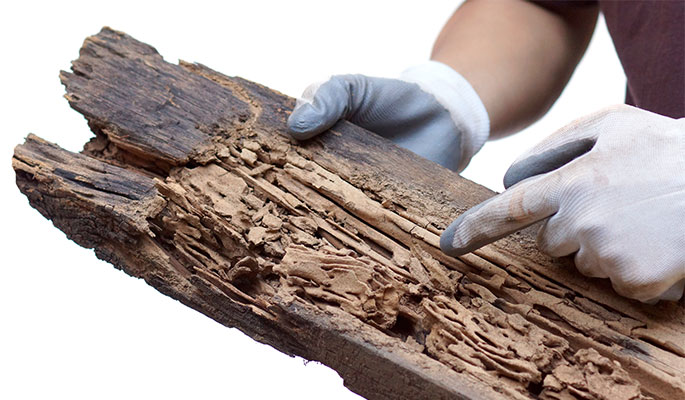
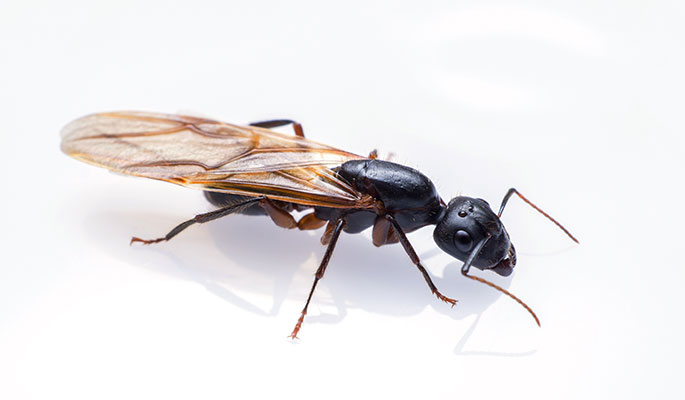
Carpenter Bees
Carpenter bees are large black bees with a yellow patch on their back. They have a shiny abdomen and that is not as hairy as a bumble bee. They can be found hovering around decks, railings, and eaves.
Carpenter bees make their nests in untreated/dead wood. The bees tunnel into the wood. Each nest only has one entrance but may have many adjacent tunnels. The entrance is usually a near perfect circle, a little over a half an inch in diameter. The bees don’t actually eat the wood they remove, but do use some of it to build partitions between eggs they lay in the nest.
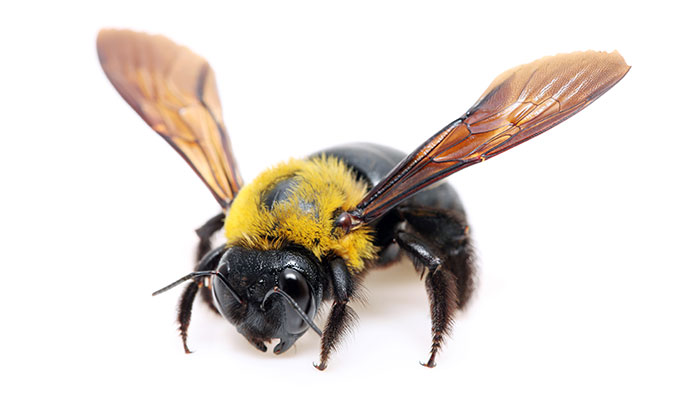
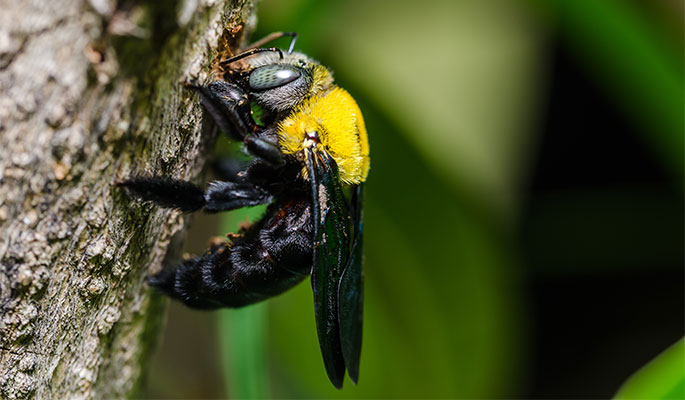
Termites
Termites are smaller than Carpenter ants, ranging from a quarter inch to three eights inch in length. They do not have a thin waist and their body is more uniform. Their antennae are straight and both sets of the swarmer’s wings are the same length.
There are many types of termites, but only a few types are present in the United States. The subterranean termite is found in the northeast. Termites are a major problem because of the damage they can cause. Termites in the walls of a home can eat the wood right up to the paint while leaving the paint intact. They remain concealed in the shelter tubes that they form below ground to the wood/food source they are trying to reach. This usually results in their presence being undetected until major damage has occurred.
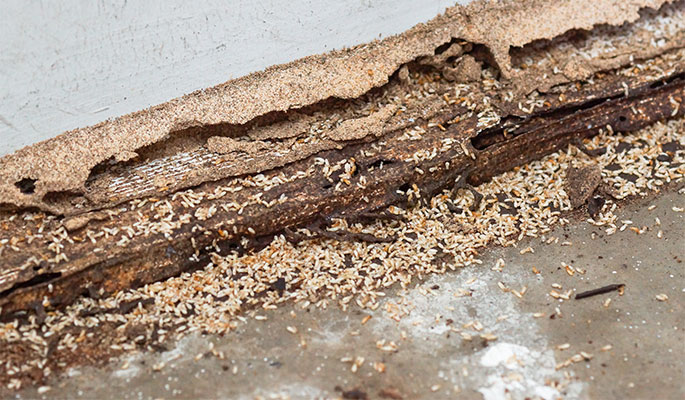
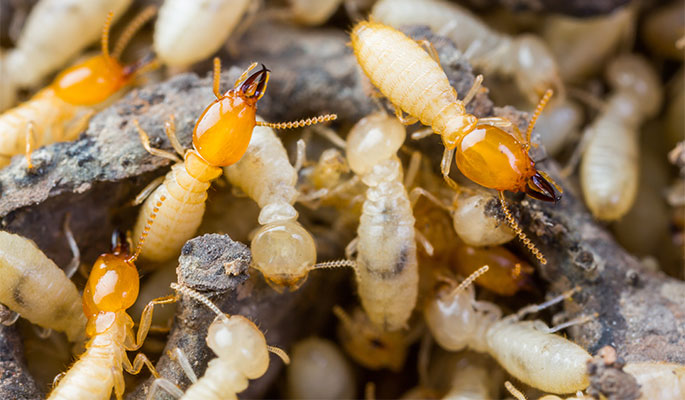
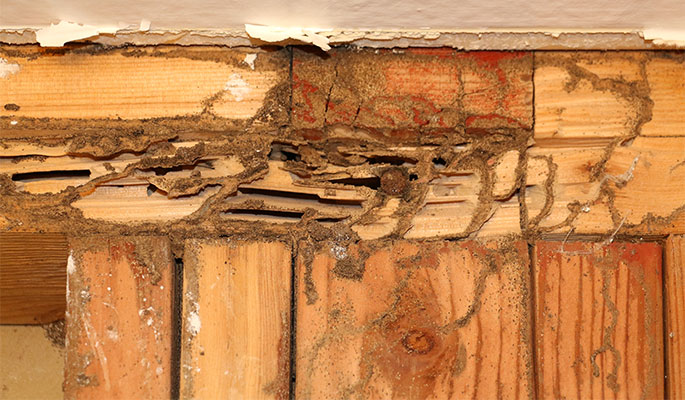
Wood Boring Beetles
There are three groups of wood boring beetles – powder post, false powder post, and death watch. These beetles invade and damage the structure as well as decorative wood and wood furniture in the home.
Powder post beetles are small, long, brown, and pill shaped. They are usually less than a quarter inch long. Powder post beetle larvae create a fine dust like frass (the debris they leave behind). They leave a very small exit hold in the wood after emerging as an adult. They mostly attack hardwoods.
Deathwatch beetlesare small, brown with tan spots, and oval shaped. They are usually less than a half an inch long. If you touch them, they will most likely play dead and pull their legs in. Deathwatch beetles mostly infest soft woods. They prefer wood that has more than 14% moisture content. The larvae fill their galleries with a more gritty/pellet frass. The size of their exit hole can vary.
False powder post beetles are larger than powder post beetles. They can be one eight to one inch long and reddish brown or black. False powder post beetles can colonize in a variety of hard woods and even sometimes soft woods. Unlike female deathwatch and powder post beetles, which lay their eggs on the surface of the wood, the female false powder post beetle bores into the wood to lay its eggs. The larvae frass is the most coarse of the three beetles.
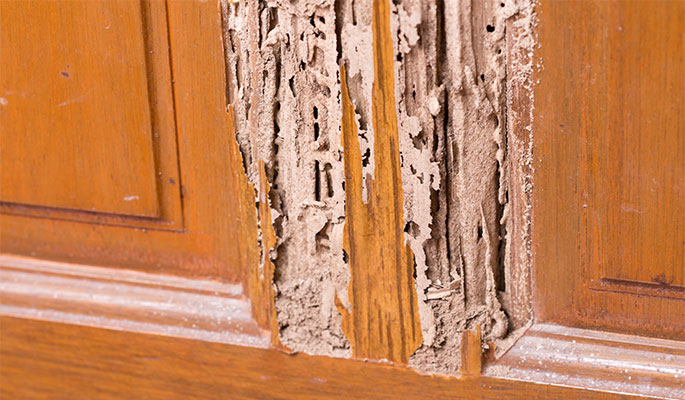
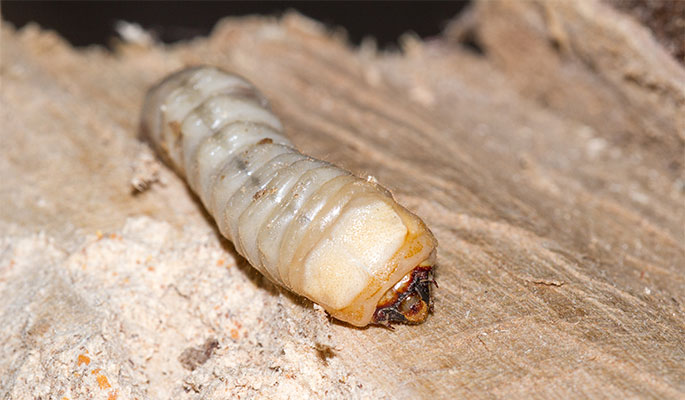
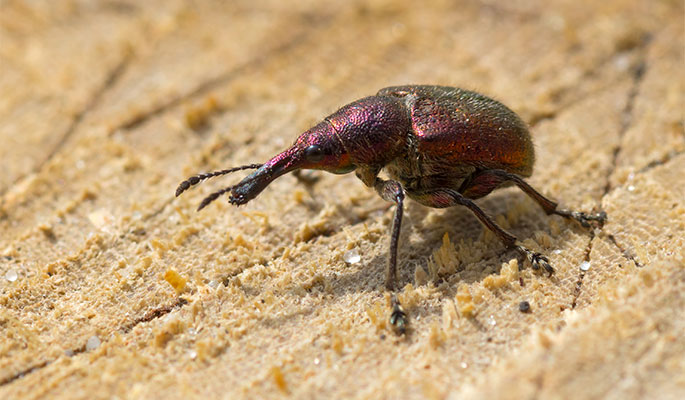
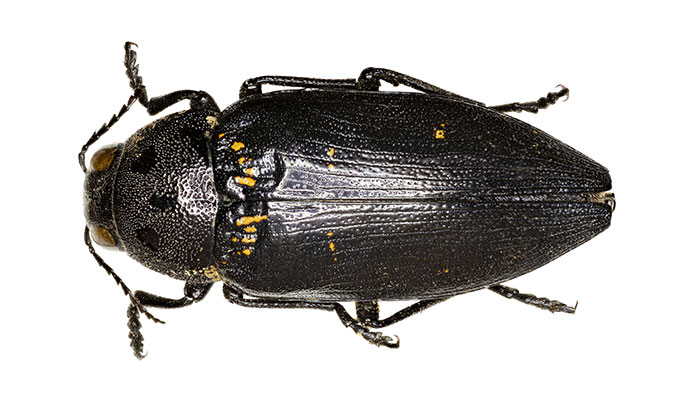
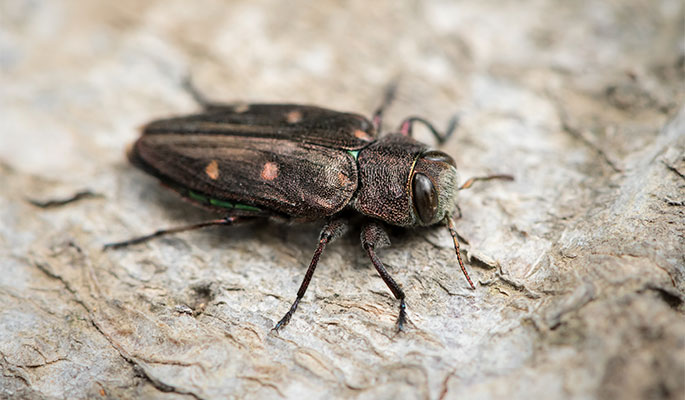
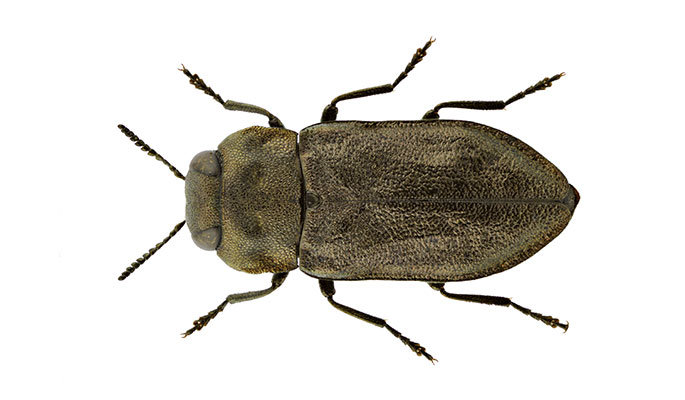
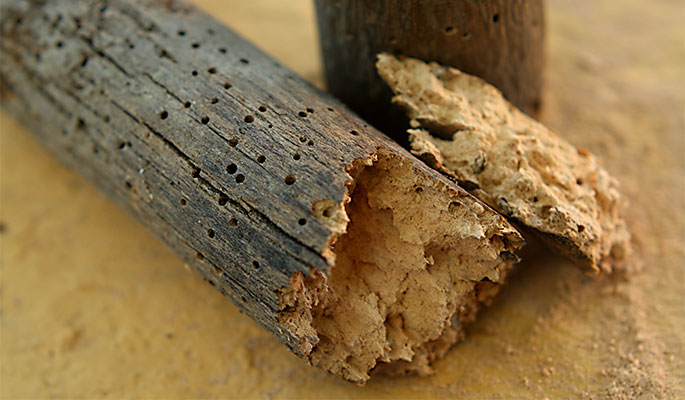
If an infestation is observed, the inspector will document what is found. A certified treatment provider will then give an estimate of the cost of remediation. The cost of this service depends upon the location and extent of the infestation. Pest control service typically include a warranty for work completed, including how many years the property should remain termite free. If insects return in that time period, the service will re-treat without cost.

